If all you’ve ever seen of the Fresno River is through Madera as you drive over it on Highway 99, you’d be forgiven for thinking it’s just a weed-infested, shopping cart collector rather than a real river.
But there’s a lot to this unobtrusive waterway, which just made history as the first river in 40 years about to go through a rights settlement under the State Water Resources Control Board.
The Fresno has it all — allegations of self-dealing, accusations of outright theft, inflated rights, hoarding and other alleged skullduggery — all on a stubby, 53-mile stretch of the river.
It will certainly keep Water Board staff busy sorting out its tangle of rights, claims and counter claims.
The last adjudication by the Water Board was on the San Gregorio Creek in San Mateo County and took more than 13 years to complete from 1979 to 1993.
“Our intent is to do this one much more quickly,” said Conny Mitterhofer, a supervising engineer with the Water Board.
Following the Oct. 20 adjudication vote by the Water Board, staffers must now investigate all claims for Fresno River water.
Then they’ll do a physical inspection of every diversion on the river including canals, ditches and pumps.
The board will use that information to issue a determination of rights with an appeal period. Then the whole thing goes to court for a judge to issue a final decree.
Though Water Board staffers expect all that to take less than 13 years, the process will still be long and painstaking.
Little river, big issues
Despite its name, the Fresno River lies almost entirely in Madera County.
The 230-square-mile watershed is mostly in the foothills around Oakhurst and Coarsegold. The headwaters are in the Sierras near Fish Camp. From there, the river runs 68 miles through the City of Madera to Dos Palos on the valley floor where it meets up with the San Joaquin River.
It’s a flashy river fed mostly by heavy springtime rains.
Beyond that, it’s hard to get much agreement on the Fresno River.
The culprit seems to be Hidden Dam, built in 1978 to create Hensley Lake northeast of the City of Madera.
The Water Board issued the Bureau of Reclamation a license for some of that stored water under the condition that existing rights holders would get their share. The license is managed by the Madera Irrigation District, which also has its own rights to the Fresno River.
As the license manager, MID is in charge of doling out water from Hensley Lake to other downstream users.
There’s been trouble on the river ever since.
Slow burn
Fresno River conflicts have come back to the Water Board multiple times over the years and the board has issued several different orders, said Jesse Jankowski, an Engineer in the Division of Water Rights.
“It’s a slow burning issue,” he said.
Downstream rights holders, essentially, believe MID is stinting them their fair share of the river.
MID, meanwhile, says it’s hamstrung by unworkable previous Water Board orders, among other issues.
In 2018, MID filed the petition seeking adjudication by the Water Board.
The board asked all parties to first try mediation, which failed.
“The question is, who has senior water rights on the river and what are the extent and priorities of those rights,” said Doug Jensen, the attorney for Costa View Farms, which has land along the Fresno River west of the City of Madera. “In the case of Costa View, we had reached an agreement with MID in 2011, but they changed those numbers and said, ‘No, we’re not going to deliver that much water to you.’”
Quantify “reasonable”
Riparian rights holders can use however much water is “reasonable” on their lands.
But because MID controls releases from the dam, it decides what’s reasonable, said Attorney Andrew Ramos who represents Adobe Ranch, which has lands on the river between Hensley Lake and the City of Madera.
“MID, each year, asks everyone for cropping information, how many acres they’re irrigating and what it’s planted to,” Ramos said. “That’s led to disputes over how much riparian acreage each party has, their points of diversion and whether new parties are allowed to start or increase irrigation.”
MID has also asserted that its rights on the river are superior to others, making its administration of the river suspect, Ramos and Jensen said.
Both attorneys said MID’s river operations have created so much distrust among their clients, they asked the board to appoint a neutral third-party to administer the river while the adjudication process is ongoing.
The board declined that request.
“Impossible task”
For MID’s part, it was OK with a third-party administrator, noting in documents that it has been burdened as the defacto Fresno River “watermaster” without authority or pay since Hidden Dam was built.
MID officials were unavailable to speak with SJV Water, pointing to the district’s petition for adjudication, letters and other documents.
In those, the district writes that the Fresno River is woefully oversubscribed.
That’s partly due to an increase in permanent crops, which require more water year round than row crops.
Indeed, Madera County Crop Reports show almond acreage blew up from 68,000 to 149,000 acres in the space of 10 years between 2009 and 2019.
MID also notes it has been operating under a Water Board order that dictates water be doled out by proximity to Hidden Dam rather than senior to junior rights holders, regardless of location. That arrangement is contrary to California water law and has led to the majority of disputes, MID states.
Also under that order, rights holders are allowed to self-report their riparian acreage, some of which has been inflated, according to MID.
Several illegal water diversions have been placed in the river by some claimants, MID states.
And one claimant isn’t using its rights at all, MID states in its petition. Rather that claimant is hoarding its rights as leverage to obtain “a marketable water supply at Millerton Lake,” which leaves other Fresno River rights short.
“Without addressing critical issues…managing the waters of the Fresno River will be an impossible task for any water master,” MID writes in a Oct. 8 letter to the Water Board. “…intervention by the (Water Board) is plainly required.”
Open flows
Now that the river’s been opened up to adjudication, attorneys on all sides predicted an onslaught of claims.
Including one from a new player — the environment.
The California Department of Fish and Wildlife has stepped into the Fresno River fray to get a better, more consistent riparian corridor, said Fish and Wildlife Regional Director Julie Vance.
“The Fresno River doesn’t flow all the way to (Highway) 99 except in extreme flood years. Historically, in those really wet years, the Fresno did support trout and salmon fisheries,” she said. “We’re not trying to get flows to that level.”
The department is shooting for enough water to support some native trout, which still exist in the river above Hensley Lake.
“If the board’s decision is that downstream users should get more water, that would mean a wetted channel,” Vance said. Something that would serve both needs.
A lot of the Central Valley’s and California’s rivers were divvied up without consideration of native fish and habitat, something a growing number of environmental groups would like to rectify.
“But it’s difficult to know where to start, the rights are such a snarly mess,” Vance said. “So when these things come up, we do advocate for fish and wildlife to get them considered in the process.”
Tip of the iceberg
More opportunities could be coming.
Water managers are just beginning to scrap over San Joaquin Valley river flood flows to comply with the Sustainable Groundwater Management Act, which mandates depleted aquifers be brought into balance by 2040.
“We’ve had an uptick in rights questions in the Central Valley in particular,” confirmed Erik Ekdahl, Deputy Director of the Division of Water Rights. “We’re seeing more applications and permits coming in. This is just the tip of the iceberg.
“We expect to see an immense increase in rights applications over the next five years.”
In fact, nearly every Central Valley Groundwater Sustainability Plan filed so far mentions flood flows from one valley river or another as a key to increasing aquifer recharge.
Share this:
- Click to share on Facebook (Opens in new window)
- Click to share on Twitter (Opens in new window)
- Click to share on LinkedIn (Opens in new window)
- Click to share on Reddit (Opens in new window)
- Click to share on Tumblr (Opens in new window)
- Click to share on Pinterest (Opens in new window)
- Click to share on Pocket (Opens in new window)
- Click to share on Telegram (Opens in new window)
- Click to share on WhatsApp (Opens in new window)
- Click to print (Opens in new window)
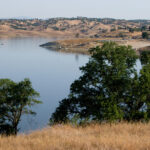
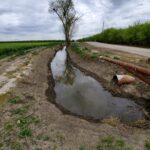
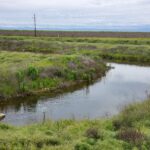
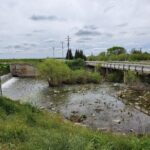
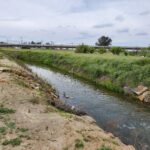
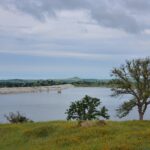







You must be logged in to post a comment.